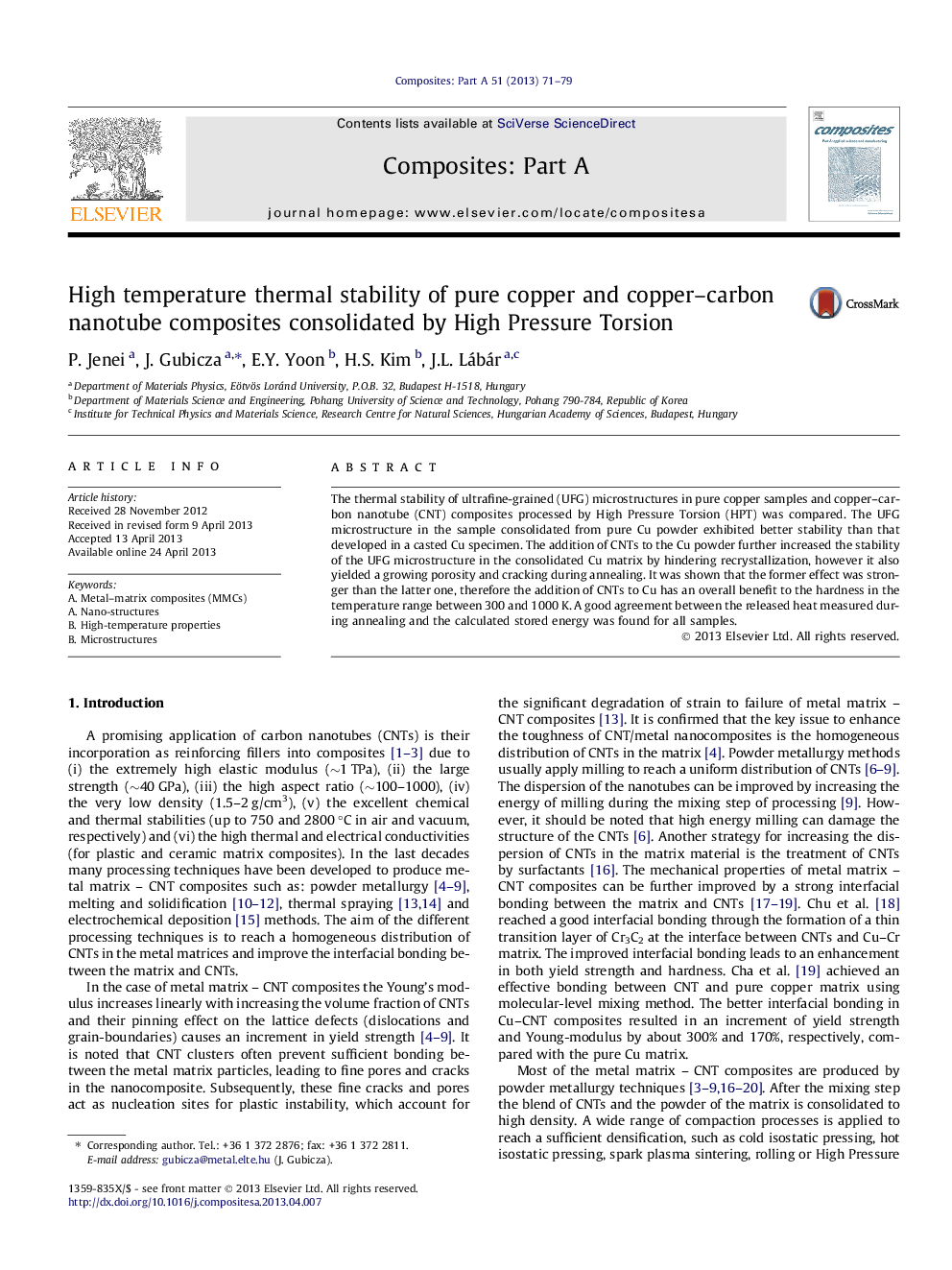| Article ID | Journal | Published Year | Pages | File Type |
|---|---|---|---|---|
| 7892706 | Composites Part A: Applied Science and Manufacturing | 2013 | 9 Pages |
Abstract
The thermal stability of ultrafine-grained (UFG) microstructures in pure copper samples and copper-carbon nanotube (CNT) composites processed by High Pressure Torsion (HPT) was compared. The UFG microstructure in the sample consolidated from pure Cu powder exhibited better stability than that developed in a casted Cu specimen. The addition of CNTs to the Cu powder further increased the stability of the UFG microstructure in the consolidated Cu matrix by hindering recrystallization, however it also yielded a growing porosity and cracking during annealing. It was shown that the former effect was stronger than the latter one, therefore the addition of CNTs to Cu has an overall benefit to the hardness in the temperature range between 300 and 1000Â K. A good agreement between the released heat measured during annealing and the calculated stored energy was found for all samples.
Keywords
Related Topics
Physical Sciences and Engineering
Materials Science
Ceramics and Composites
Authors
P. Jenei, J. Gubicza, E.Y. Yoon, H.S. Kim, J.L. Lábár,
